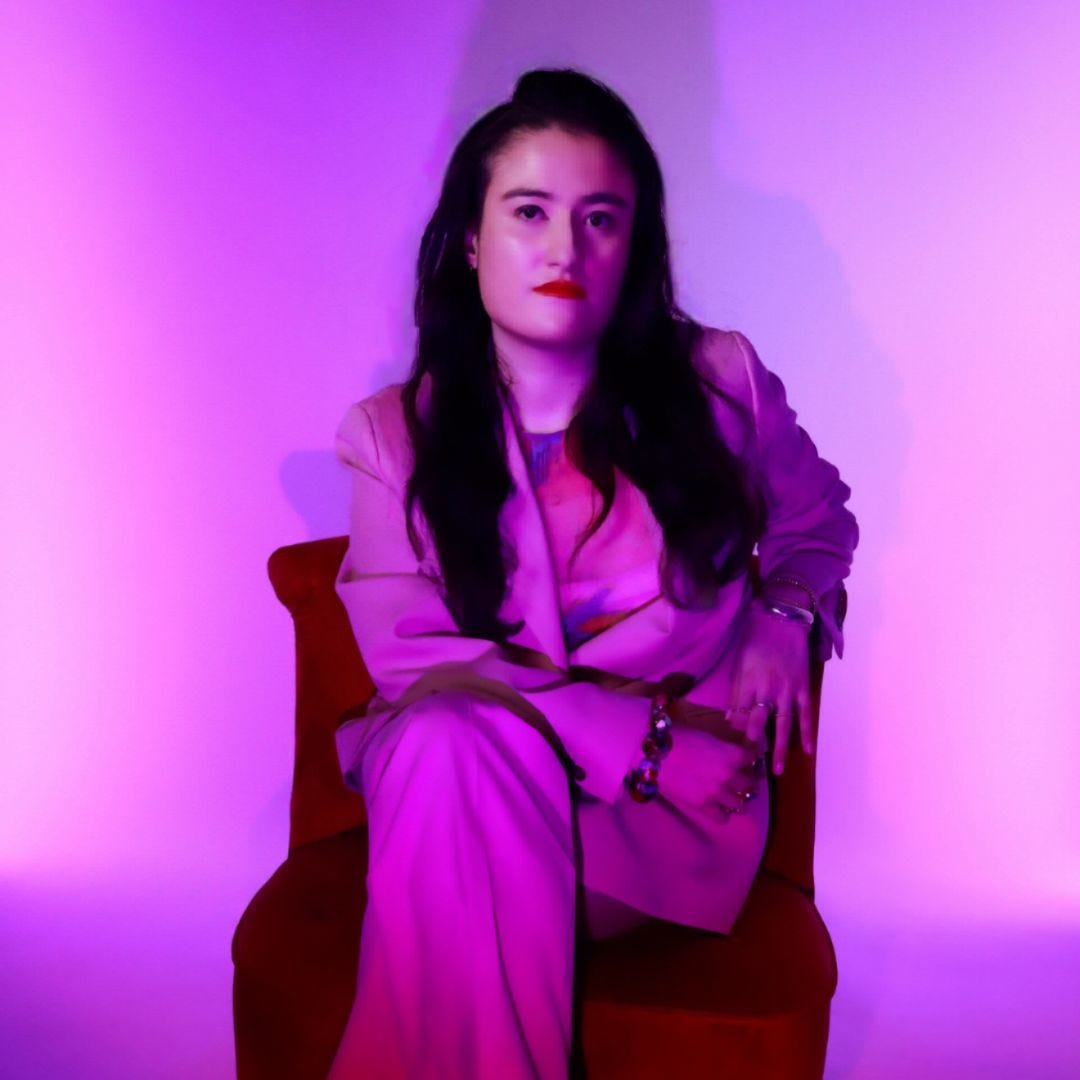A lot of art marketing talks about storytelling on how to “sell” a work with the right narrative. But the people who actually shape how stories travel through the art world aren’t marketers, they’re journalists, curators, editors, the ones asking the questions, choosing who and what to highlight, and deciding what deserves more space.
Zoë Goetzmann is one of those voices.
She’s an art journalist, curator, and the founder of The Artist Workspace Gallery, an initiative focused on supporting women in art through both virtual and physical platforms. Her writing isn’t about hype or trends for their own sake but more on understanding why a story matters, who it serves, and what it reveals about the art world itself.
In this interview, Zoë offers an unvarnished look at how she decides what’s worth covering, what artists should know about visibility, and what’s still too often left out of the conversation.
1. What makes a story in the art world worth telling?
Based on my experience in art journalism and my art world practice, I have always believed that every piece of art has a story.
My mother, who is an architect, always said that “the best design (or portfolio) must have a concept.” As an art writer, I gravitate toward artists and artworks with a compelling narrative. When writing, I ask questions like: What is the artist’s story? Who are they? What mediums do they work with? Who inspires them? How do they create? What feels innovative about what they’re doing, especially given what’s happening in the art world right now?
2. How do you recognize when an artist, show, or movement is about to matter beyond its immediate circle?
There’s a simple answer: go to shows and network.
As an art journalist, you need to be at the busy hub of the art world. You can often tell what’s about to take off just by who shows up and how people respond.
But it’s not just about following hype. Journalists have to be discerning. I believe in writing about the work I genuinely appreciate, not just what’s fashionable. At the same time, there’s a balance that you have to know what’s moving the conversation forward professionally.
3. What kinds of artists tend to catch your attention, and what keeps your interest past the first impression?
I always tell people to write about or collect what they like.
For me, that means being drawn to color, texture, and medium. I want work that’s thought-provoking, socially relevant, and well-made. I gravitate toward contemporary art because that’s what I write about most.
I also care deeply about championing women artists. Two of my favorite works I’ve collected are a textile piece by Karolina Dworska called Bankside Gifts (inspired by her mudlarking in London) and a flower petal print by Sarah Meyohas from her Cloud of Petals show in New York. Both pieces stand out for their color, story, and innovative use of medium.
Most importantly, these artists showcase real mastery in the tufting, digital knitting, digital art, prints, NFTs all while keeping it personal and meaningful.
4. How has the role of art journalism changed in today’s culture, and where do you think it’s headed?
I hope it’s moving toward greater transparency.
We’re entering an era of more honest art-world criticism. As the field lowers its barriers and becomes more inclusive, both socially and economically, it’s crucial to have journalists offering genuine perspectives.
Podcasts or newsletters on platforms like Substack are excellent ways to review exhibitions or profile artists independently, and to actually get paid for it.
Honest criticism is something I admire in Fetch London, where I write now. Their approach (and the leadership of Editor-in-Chief Victoria Comstock-Kershaw) emphasizes asking the real questions: Why does this show exist? What’s its purpose? That’s what people actually want to know.
5. What do you think the art world tends to overlook, and what voices or perspectives are still waiting to be heard?
For me, it’s about women artists and art professionals, but especially women of color and minority artists.
I make it my mission to interview and write about them. Some of my favorite profiles include Adelaide Damoah, Simone Brewster, Makiko Harris, Hannah Nijsten, Lidia Russkova-Hasaya, Agathe Bouton, Laurence de Valmy, and Marine Tanguy of MTArt Agency.
I’ll always remember my first artist profile Robyn Blair Davidson (@byrobynblair), a visionary artist and entrepreneur making ‘candy-filled’ vitrines with playful phrases.
At this point in my career, I’m more aware than ever of the underrepresentation of women’s voices. Through my writing and curatorial practice, I want to highlight these stories and how and why they create, and what keeps them going.
Zoë’s approach to art journalism is both clear-eyed and grounded in care. She’s not just describing the work. She goes beyond in thinking about what it means, why it matters, and whose story is being told.
If you want to see more of her writing, curatorial work, or connect directly, here’s where to find her:
🌐 The Artist Workspace Gallery: theartistworkspacegallery.com
🌐 Portfolio/Website: zgoetzmann.com
📸 Instagram: @byzoesera
Want more thoughtful interviews with art professionals? Subscribe to The Time-Art newsletter. We share real conversations, collector insights, and practical strategies to help you sell art with intention.




